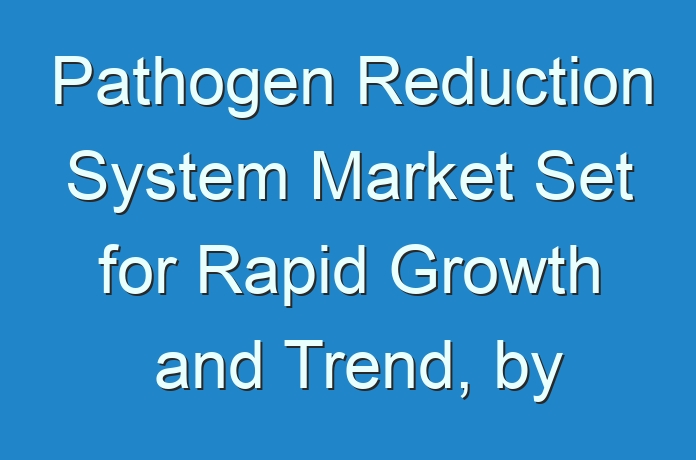
Pathogen Reduction System: Introduction
- Transfusion transmitted infections (TTI) are still likely to occur despite various proactive measures taken for blood safety such as stringent donor screening, introduction of new exclusion criteria post-donation tracking, and transfusion haemovigilance. The pathogen reduction system has been developed to inactivate or remove the virus, bacteria, fungus, or protozoan pathogen from blood and ensure blood safety.
- Pathogen reduction systems are based on the photochemical reaction, which inactivates viruses and bacteria that may contaminate blood products. Several physical, chemical, or photochemical processes have been developed to inactivate or reduce pathogens and increase safety of blood supply. A major feature of photochemical treatment, which is developed for platelet therapy, is the ability to leave platelet function unblemished so that post-transfusion recovery and survival are not impaired.
- The risk factor in pathogen reduction systems is considerably less; however, care has to be taken during the pathogen reduction process that involves chemicals as they have multiple sites of actions. For instance, cross-linking of lipids in cellular membranes and organelles. Pathogen reduction systems interacting with proteins can cause cellular signal transduction mistakes, respiratory pathway deficiencies, or structural abnormalities. Chemical binding to nucleic acids or intercalating nucleic acid chains can lead to errors in transcription, translation, or replication.
Request For Sample @ https://www.transparencymarketresearch.com/sample/sample.php?flag=S&rep_id=80941
Key Drivers, Restraints, and Opportunities of Pathogen Reduction System Market
- Increase in prevalence of infectious diseases and growing awareness about the need for effective blood transfusions are major drivers of the global pathogen reduction system market. Blood transfusion is considered as a key pillar of the modern healthcare system, and it saves millions of lives every year; however, several hospital patients in low- and middle-income countries do not have access to a timely and safe supply. According to WHO, the total blood supply around the world was estimated to be around 272 million units, in 2017, while the demand stood at 303 million units, which means the world was lacking 30 million units of blood. Moreover, the 119 countries with insufficient supply, caused the shortfall to reach 100 million units. Risk of pathogen and virus development in the blood before transfusion is considerably high.
- The risk of affecting or harming the blood cells or generating toxic chemical agents during the pathogen reduction treatment and fair reimbursement issues have been major restraints of the global pathogen reduction system market. Ongoing research and development is likely to play a major role in the evaluation of these new technologies.
- Increase in diagnostic of blood transfusion is estimated to offer further opportunities. Moreover, technological development to prevent and avoid any kind of bacterial entry in the blood receiver’s body is also estimated to create opportunity for the global pathogen reduction system market.
North America to Capture Major Share of Pathogen Reduction System Market
- North America holds a major share of the global pathogen reduction system market. High rate of blood transfusion due to a rise in incidence of blood-related diseases, such as anemia, hemophilia and sickle cell diseases, which require pathogen reduction system for the safe transfusion of blood from donor to the patient. According to the American Red Cross, sickle cell disease affects 90,000 to 100,000 people in the U.S. About 1,000 babies are born with this disease each year. Sickle cell patients can require blood transfusions throughout their lives. Nearly 21 million blood components are transfused each year in the U.S.
- The market in Asia Pacific is projected to expand at a considerable pace during the forecast period owing to growing prevalence of diseases such as cancer, which require regular blood transfusion during chemotherapy. The region is one the worst affected in terms of road accidents. According to WHO, Southeast Asia recorded a death rate of 20.7 deaths per 100,000 population. Several deaths occurs due to lack of availability of safe blood for transfusion.
Request For Covid19 Impact Analysis Across Industries And Markets @
https://www.transparencymarketresearch.com/sample/sample.php?flag=covid19&rep_id=80941
Key Players Operating in Global Pathogen Reduction System Market
The global pathogen reduction system is highly fragmented, with the presence of various key players. A large number of manufacturers hold a major share in their respective regions. Major players operating in the global pathogen reduction system market are:
- Terumo BCT, Inc.
- Macopharma SA
- Cerus Corporation
- AngioDynamics, Inc.
- Octapharma AG
Read Our Trending Press Release Below
- https://www.prnewswire.com/news-releases/increased-research-activities-boost-demand-opportunities-in-bioprocess-analyzers-market-tmr-301219737.html
- https://www.prnewswire.com/news-releases/growth-of-the-ligation-devices-market-to-be-driven-by-high-demand-from-elective-and-minimally-invasive-surgeries-tmr-301212502.html
- https://www.prnewswire.com/news-releases/growth-of-the-doppler-ultrasound-systems-market-to-be-driven-by-increasing-incidences-of-fetal-abnormalities-and-cardiovascular-diseases-tmr-301216018.html
About Us
Transparency Market Research is a global market intelligence company, providing global business information reports and services. Our exclusive blend of quantitative forecasting and trends analysis provides forward-looking insight for thousands of decision makers. Our experienced team of analysts, researchers, and consultants, uses proprietary data sources and various tools and techniques to gather and analyze information.
Our data repository is continuously updated and revised by a team of research experts, so that it always reflects the latest trends and information. With a broad research and analysis capability, Transparency Market Research employs rigorous primary and secondary research techniques in developing distinctive data sets and research material for business reports.
Contact
Transparency Market Research,
90 State Street, Suite 700,
Albany, NY 12207
Tel: +1-518-618-1030
USA – Canada Toll Free: 866-552-3453
Email: [email protected]





